Quick Tips: Wood Decorating
Carve into all you need to know about using wood for your projects in this feature from the June 2019 issue of A&E magazine.
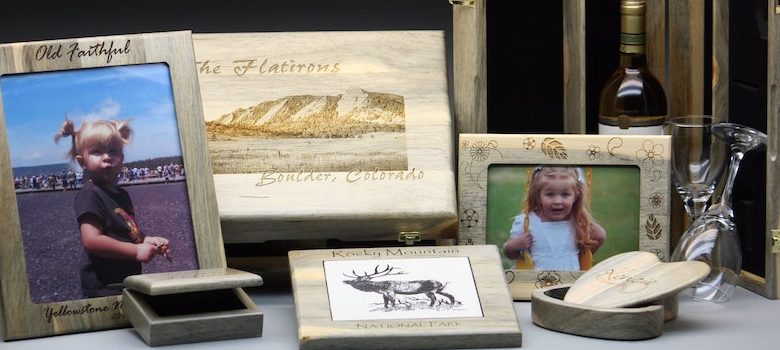
Chances are you as an awards and personalization professional have decorated your fair share of wood products. From award bases to picture frames and more, wood is a desirable product for many different customer groups. Following, you’ll find a few quick tips that will help you with your wood decorating needs.

Customers that seek wood recognition products are those that…
- Are trying to match an existing product or add on to an existing wood product.
- Are looking to personalize directly onto a product as opposed to a metal plate or other plate used for personalization.
- Want a long-lasting gift or heirloom.
- Want a high-end look but a more cost-effective variation; these customers will choose wood products to highlight a metal/glass/stone or other type of award piece.
Barry Stewart, Colorado Heirloom (Image courtesy Colorado Heirloom)
The Natural Allure of Wood
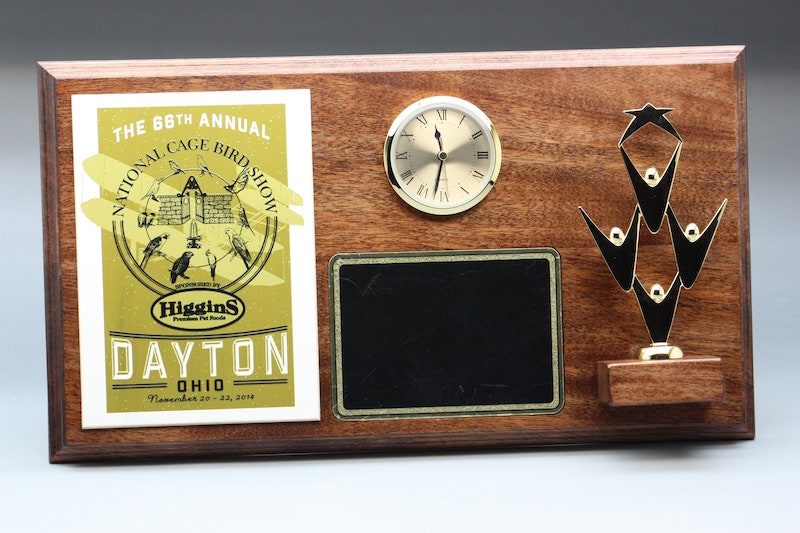
Wood gives awards a natural look and feel that can’t be achieved with man-made products. In addition to typical natural wood materials, there’s been an influx of new products such as pre-stained and pre-colored wood sheets that open up a whole new world of possibilities. In addition, combining wood products with other media like metals and plastics adds a unique look to any award or sign project.
Jessica Carpenter, JPPlus (Image courtesy Colorado Heirloom)
Tips for Lasering Bamboo Cutting Boards
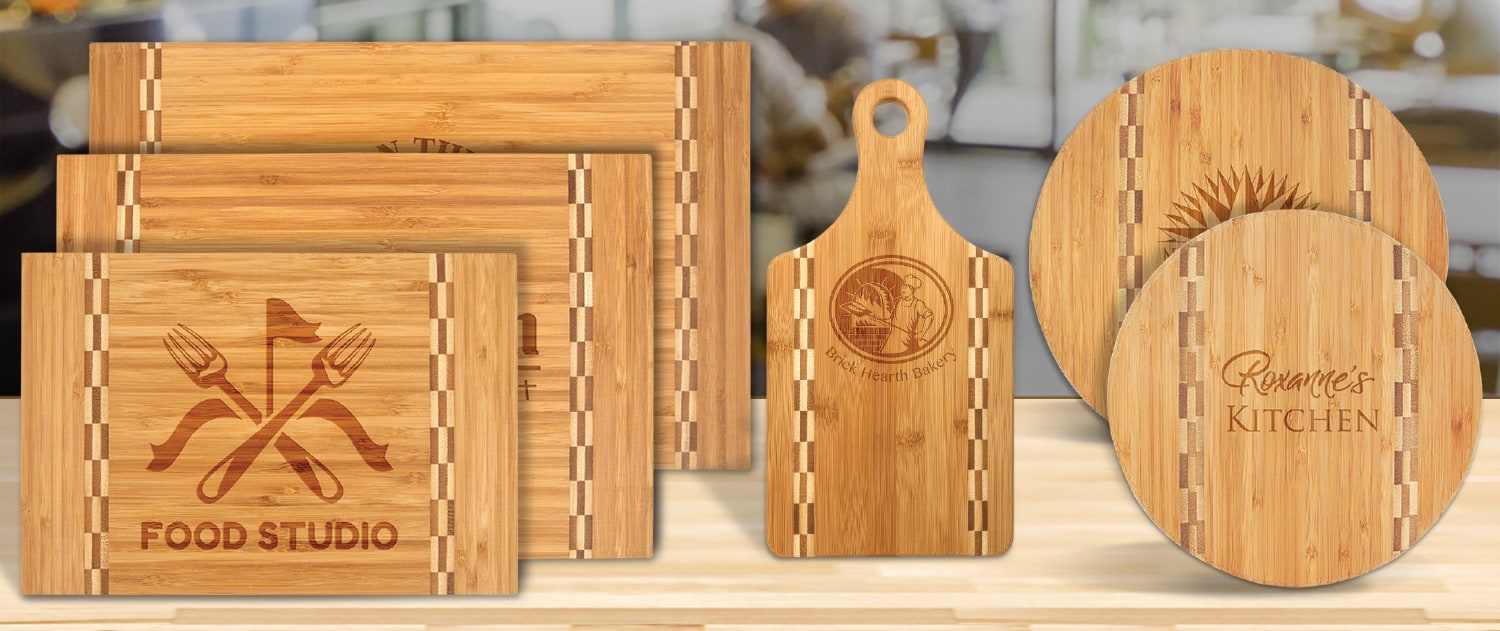
Genuine bamboo cutting boards make lovely personalized gifts. They’re durable and will stand up to everyday use, but also beautiful, making them perfect to display as décor in any kitchen. Laser engraving these eco-friendly boards is a fairly simple process that produces stunning results. All you’ll need is the cutting board; LAZ32 or your desired cleaner; and if paint-filling, you’ll need masking tape, LazerDark Clear Coat, and LazerDark Black or Dark Brown (or clear coat and paint of your choice).
Recommended settings vary depending on the brand, watt, and model of your laser, but as a guideline these work the best:
- 35 watt: DPI 600; Speed 25%; Power 60%
- 60 watt: DPI 400; Speed 35%; Power 85%
- Vector cut mask for guide on the laser bed. Place the cutting board on the mask. Test for correct marking position by lasering a test piece, or tape a clear piece of plastic to the board and engrave.
- Your engraving will vary from light to dark, showing bamboo’s natural beauty.
- Clean with LAZ32. If paint-filling, cover board with masking tape, using a squeegee to remove bubbles or wrinkles. Engrave your art, spray with LazerDark Clear Coat, and then LazerDark paint. Allow to dry and remove mask from board and letters/graphics with closed areas. Paint-filled boards are not recommended for food contact.
Cheryl Loban, JDS Industries (Image courtesy JDS Industries)
Top UV Printing Tips for Wood Substrates
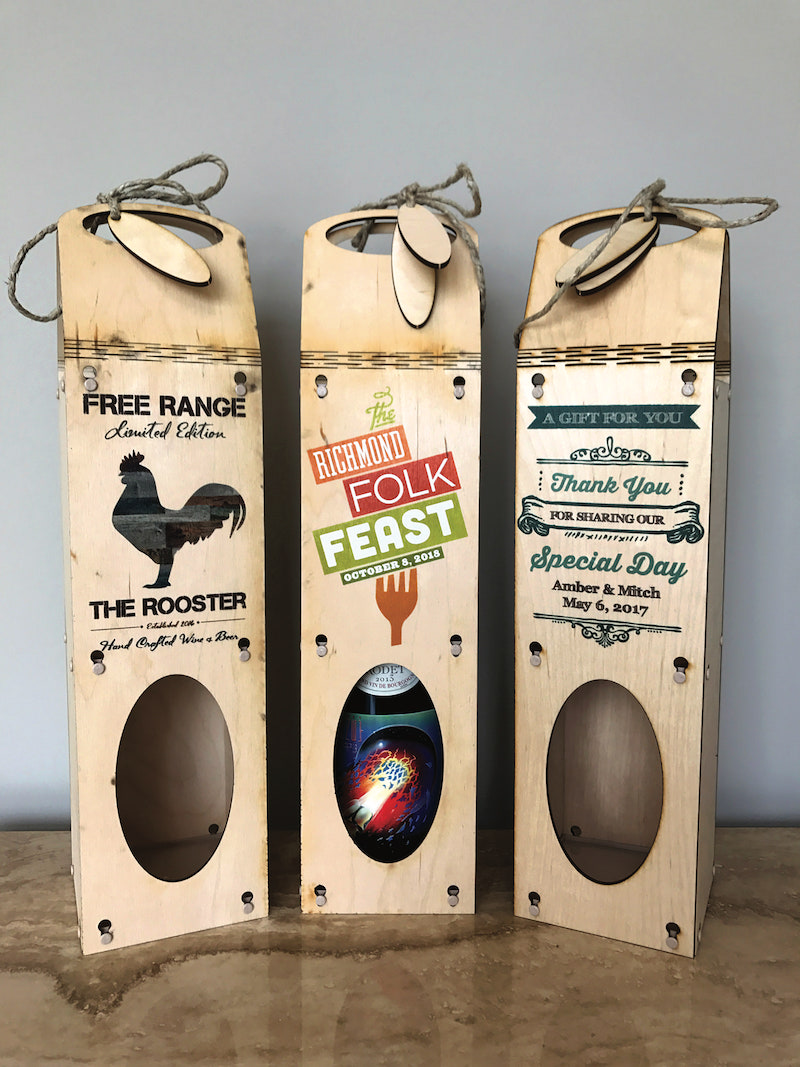
Finished woods work the best for me when I am UV printing them. Printers with white and clear inks help adhere the print to the surface. Maple wood is one of my favorites to use with printer. The light wood color can be used as the white background instead of using a white base under the colored inks. This allows the grain of the wood to show through the lighter colors, giving it an even more unique appearance.
Barry Stewart, Colorado Heirloom (Image courtesy LogoJET )
3 Tips for Laser Engraving Wood
- When vector cutting wood in a laser, the use of a low-tack paper mask reduces burn marks.
- When laser engraving wood, you can typically use low power, high speed.
- Adjusting your DPI high can give you a darker, higher contrasting mark when lasering.
Jessica Carpenter, JPPlus (Image courtesy Colorado Heirloom )
Common Issues Faced When Decorating Wood

One issue is that wood is unique – no two pieces will necessarily react the same when lasered or worked with. They can look similar to each other, but not be an exact match. This shows in laser engraving also: if there is a knot or harder piece of grain running through a wood piece, the engraving may not get as dark as the softer grain around that part.
Barry Stewart, Colorado Heirloom (Image courtesy Colorado Heirloom )
Warping Wood
Warping is a common issue when working with 1/8-inch or thinner sheets. You can avoid warping by storing your sheets in a dry, low humidity area, with a weight on top if necessary.
Jessica Carpenter, JPPlus
Popular Types of Wood for Personalization
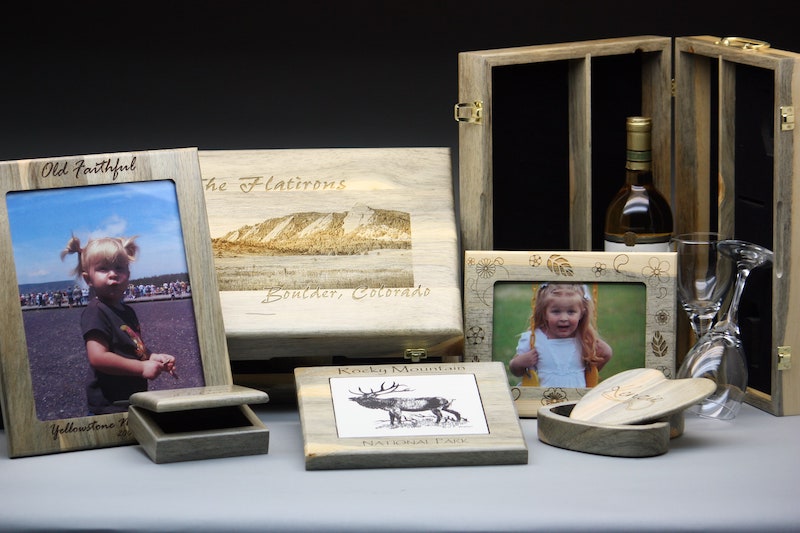
The most popular/common wood types that we use are alder, maple, and cherry. These lighter to medium-colored woods are used more often for gift projects as they can get a high natural contrast with lasers and also look great with color on them.
Another common wood type used for awards is walnut. This is a dark wood that has been set as a standard for high-end awards and award bases. Some woods can be stained darker to achieve the same look as walnut, giving the end user the same look and feel but at a lower cost.
Blue Pine (seen here) is still in high demand as it is a recycled wood. This is getting more difficult to produce as the wood can often have many small bore holes in the grain that cannot be avoided for every piece being manufactured.
Barry Stewart, Colorado Heirloom (Image courtesy Colorado Heirloom )